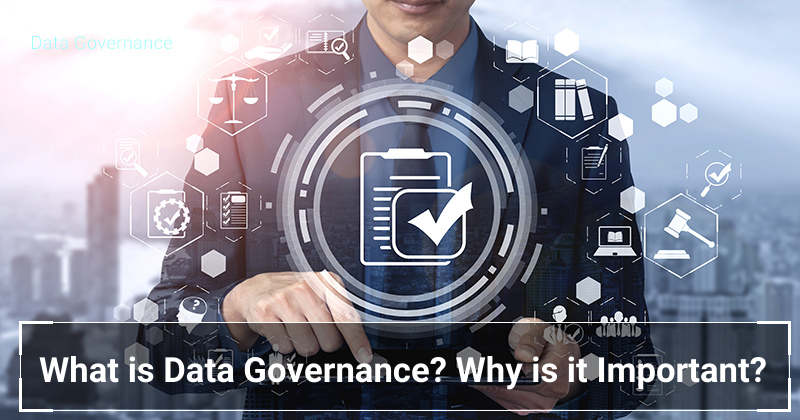With fragmented and unmonitored data across systems, organizations face difficulty in strategizing and decision making, and other operational challenges. If your organization is facing these issues and spending way too much time cleaning up and validating data, then perhaps it might be time to consider a new data governance strategy to manage all your data across systems.
At To-Increase, we have helped several organizations manage their data governance strategy. But it is important to first understand the nuances of data governance and its importance before you set out to outline your own data governance framework and strategy.
Therefore, in this article, we will cover:
- What is data governance?
- What are the integral pillars of data governance?
- What happens when there is no data governance?
- Why is data governance important?
- How do tools aid data governance processes?
- Is an ERP system enough to manage data governance?
- Do you use D365 and struggle to manage your master data?
- What is your business scenario?
What is data governance?
Data governance involves the strategy, the people, the tools, and processes involved in data management. The processes and rules under data governance dictate the guidelines for master data and data quality. These policies and rules or the data governance framework along with data governance tools for master data management (MDM) and data quality management (DQM) help data stewards manage and maintain one source of truth for the organization.
Since data touches every facet of a business, data governance is becoming an essential function for organizations. As organizations scale and migrate to cloud technology, they need appropriate means to manage their data to make swifter and more impactful decisions.
According to Scott Taylor, renowned author of ‘Telling Your Data Story’, data governance helps you determine the truth before you can derive any meaning from that data. According to Taylor, data governance helps you to manage and store content that flows through everything organizations do.
In a DGIQ Keynote in 2021, Taylor quotes legendary artist and philosopher Leonardo Da Vinci and says that “everything connects to everything else”; which in the digital age is true in this context, as all data is connected and is the constant that flows through departments across an organization.
What is master data and master data management?
When you talk about data governance or master data management, people think it is the same discipline, but MDM is in fact governed by the policies under data governance. However, all organizations need master data content that is controlled, managed, and distributed by a data steward.
While master data is the content, MDM is a practice area, or the software used to manage the master data. MDM involves the tool that helps solve the challenge of distributing the master data from one company or one environment to the other.
What is data quality management and why is it crucial?
While data governance provides a guideline that defines the policies and strategy that help in managing and distributing the master data. Data quality management helps you correct and evaluate the data before you publish it for the organization as master data.
Data quality checks and DQM tools ensure that the six data quality dimensions of good data quality are maintained which are the completeness, accuracy, validity, integrity, timeliness, and consistency of the data.
What is data stewardship?
In this equation, data stewards play an integral role that can be compared to a captain of the ship, who guides, navigates, and manages the course. Similarly, data stewardship involves the management, security, organization, storage, and distribution of data.
What are the integral pillars of data governance?
There are three integral pillars of data governance:
The processes
According to sciencedirect.com, a data governance process should use a RACI chart. RACI stands for responsible, accountable, consulted, and informed. RACI charts outline the teams or members of the organization that are responsible, accountable, consulted, or informed in the data governance process. The processes that are outlined under data governance charter the course and provide set guidelines to ensure that responsibilities regarding specific data sets are clearly called out.
The people
While data governance ensures that there are designated data owners with specific responsibilities, data stewards must ensure and monitor whether the data governance framework is followed. Therefore, besides the responsibilities listed above, they are also responsible for the compliance and consistency of the current data in accordance with the set data governance plan.
The rules
These involve the set rules and standards defined by data stewards which include validations and acceptance criteria. These could be validations to check for valid postal and email addresses for example or having fields mandatory based on certain conditions. The data steward could add an acceptance criterion for when the master data is ready and when it's complete and ready to be distributed.
What happens when there is no data governance?
When there is no data governance, what we expect is a big mess! But on a serious note, when you look at the three pillars mentioned above, if they are not balanced, then that could result in serious issues.
The domino effects of lack of data governance are data quality issues, and incomplete and inaccurate data. Examples of this would be incomplete transactions, incorrect form pricing or missing details. This leads to incorrect reporting which will lead to incorrect decisions for the future.
Incorrect or missing data can impact operations as well.
Let’s look at an example to understand this. Say an employee creates an item and does not notify a warehouse manager, as there is no data governance process in place. And the item had some crucial information regarding its size that had to be conveyed to the warehouse prior to dispatch. So, when the item arrives at the warehouse, there could be a logistical issue if there was no place to store the item. A data governance process could help avoid such issues.
Why is data governance important?
And in case, you think all three pillars are not necessary for data governance and only consider, people and processes without rules, the result will not be optimal. The processes might be clear but if you have not set rules for making certain fields mandatory and validations for checking addresses and email addresses, the customers or your employees could enter incorrect information that will be saved in your system which could cost you time and effort to rectify at a later date and reputational damage too. Therefore, it is important to have all three pillars of data governance.
Data governance is important as incomplete or incorrect data means you will not be able to make good decisions and your data stewards will be spending more time than necessary cleaning up data.
Data governance can help you
- Streamline operational efficiency
- Get a holistic picture of your organization’s data
- Determine security risks and fix them
- Have better reporting based on improved data quality
- Derive improved analytics and business intelligence based on accurate and complete master data and transactional data
- Have a clearer and more accurate picture for better decision making
How do tools aid data governance processes?
Organizations need tools to be able to put their data governance strategy into practice. By implementing the correct tools, they can organize, correct and manage the processes set by the data governance strategy. A tool to manage data quality validations, create workflows, and distribute master data management is what would be the ideal solution mix to execute a holistic data governance strategy. While the data governance processes should clearly outline how one or multiple users can provide or access the information.
There are specific people assigned within an organization who work sequentially or in parallel to provide information for master data guided by the data governance policies and processes in place. If they have the correct tools implemented and configured for data quality checks, and a workflow, then it will just be a smoother process. And with the correct data in your system’s records, you also get the correct output for reporting.
Is an ERP system enough to manage data governance?
Unfortunately, Dynamics 365 Finance and Operations does not have all the tools to execute your data governance strategy. This ERP application has the foundation for your data but tools for data quality management, master data management, and data workflow is what will help you streamline, improve your data quality, and manage and distribute master data.
Let’s look at an example to understand this. Let’s say you need to fill in the information about items that you source or manufacture in your ERP system. On the form, there are over 200 different fields and there are also some related forms with related information for that item. That would be overwhelming for majority of the users of the ERP. However, with a data entry workflow solution, you could guide your team and present various users only the necessary fields related to their job function. So, a data entry workflow tool would also be beneficial for collaboration purposes.
Let’s say you do not have a validation check for address validation in your ERP, and an employee has mistyped a city name, or a street name. Then the goods will be sent to the wrong address, or maybe the invoice will be sent to an incorrect address. This will lead to delays and issues and will be a bad experience for your customer. If you have a data quality tool, then you could avoid such mistakes.
Do you use Microsoft Dynamics 365 and struggle with managing your master data?
In an ERP like Dynamics 365, if we have all our information in the ERP, then we would just have one company where we have all the master data, and all kinds of operational companies. But you would need an MDM tool to set rules for security of the data entered. An MDM tool would allow you to open and block certain fields for different functions. The solution would also allow you to manage dynamic field security, by setting up dynamic rules for certain available fields for a user to enter data more efficiently.
An external MDM solution has its own rules, and all the other applications connected to it can also have their rules. But when it's just in one environment like in the ERP system, then we need to define rules for each company and that might be cumbersome.
Our solutions at To-Increase, have an added complexity as our solutions are built inside the Microsoft Dynamics 365 ERP system. This works as a major advantage for organizations that want to connect their ERP and business systems and manage and distribute master data from within the ERP.
What is your business scenario?
We would love to recommend some next steps for your organization, but it would depend on your company’s scenario. For example, if you are currently implementing an ERP solution then it might not be wise to invest in master data management right now without a data governance strategy in place. In our experience, we've seen ERP implementations fail, as there was no data governance strategy in place for handling all the master data.
As a best practice, organizations need to first align with all their business functions and current processes to get a clear picture on
- How can they determine a data governance strategy?
- What is master data for them?
- What kind of data quality checks do they need?
- Which teams need to drive and be responsible for data?
Once you have done the above and if you are keen on implementing data governance processes and have a blueprint chartered out, then you could reach out to us if our data governance tools fit into your data governance strategy. If you are keen to learn more about our data governance tools, register for our webinar using the link below.




